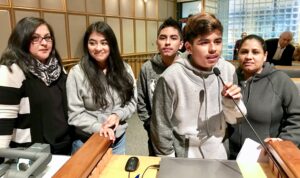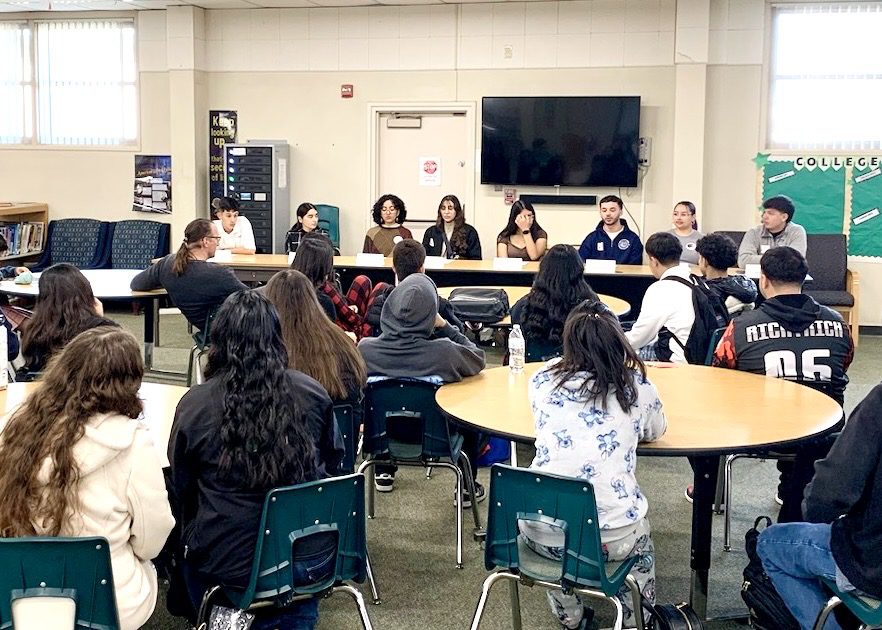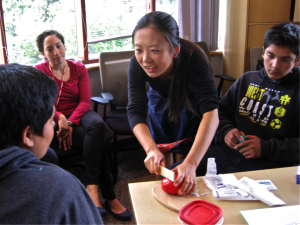Advocacy and Mentorship
Encouraging activism
We encourage students to “find their voices” and speak out in classrooms and public forums. As students become confident in their abilities, they learn to advocate for issues important to their communities. They become powerful spokespersons, testifying at city council and school board meetings.
Near-Peer models
We link local middle and high school students with university students and health care professionals. Our goal is to create near-peer models, exposing students to college and future careers and making them feel like they belong in higher education.

Student panels
Students who are graduates of our programs return to mentor high school students. The students learn that these graduates are from families like theirs and understand the importance of taking challenging classes, working hard, applying for financial aid, and tapping into resources to make college a success.
Hands-on workshops
We partner with Stanford and Central Valley health professionals to lead hands-on workshops. In this emergency medicine workshop, led by a family medicine physician and physician’s assistant, students were assigned the role of a victim, responder, or educator. They learned how to conduct an initial assessment of a trauma injury, communicate with a 911 operator, apply sterile bandages and pressure to a cut (illustrated by props including a plastic tomato, knife, and fake blood) and how to use an EpiPen to respond to a life-threatening allergic reaction caused by a bee sting.
Personalized campus tours
Field trips are taken to college campuses to demystify college. Middle and high school students are shown the diversity of college students and engage in conversations with college students and professors.
Student comments
I learned that you can go to Stanford or other universities even if you are poor but have good grades and test scores. And they will even pay for you if you don't have any money!
Thank you for teaching us how to tell if someone is hurt. I know to ask them if they can say their name and open their eyes. Then when you call 911 you stay on the phone so the operator can tell you how to help the person.
I had never talked to a real doctor before and I want to become one! Thank you for showing me how to clean a bad cut, press on the skin with the gauze to stop the bleeding, and put on a Band-Aid. My mom will be amazed.
I learned that it is more helpful to get into college if you take difficult classes in high school like honors chemistry and get a B rather than if you take an easy class and get an A.
A comment from a Stanford Partner
The student's words exemplified that determination has the power to help each individual reach their potential; it was a beautiful thing to see all that potential in the room."




